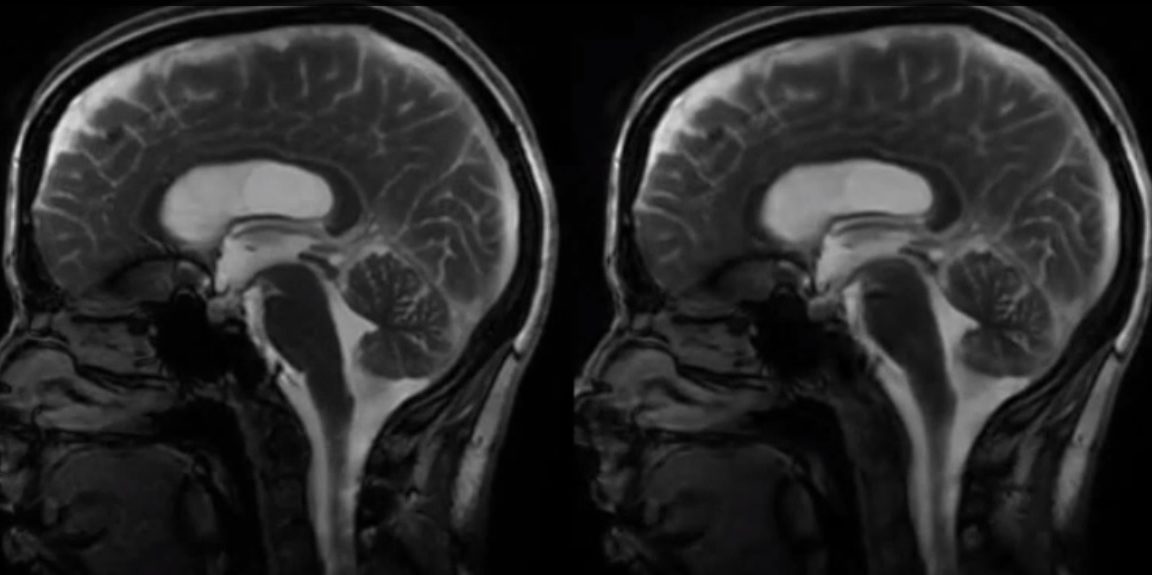Here you were, figuring your brain just sits still inside your head purring like a kitten in grandma's lap, and along comes science and catches this "most complicated object in the known universe" in the act of jerking around like a catfish on a pole.
Don't believe me? Check out the "jumpy brain" video below. It's only several seconds long. But that should be enough to change your mind.
Okay. Actually, your brain doesn't really jump around all that much inside your skull, although it does rhythmically bulge and shrink with each heartbeat, by an amount equivalent to a bit less the width of a human hair.
Nothing to see here, folks, just walk away. Except don't, because there is.
A study recently published in the journal Magnetic Resonance in Medicine and co-authored by Stanford life-science research assistant Itamar Terem, then-postdoc Samantha Jane Holdsworth, PhD, (now at the University of Auckland) and several other Stanford colleagues describes a new imaging method that, by means of a kind of strobe-action amplification technique, is able to visually blow up the minute heartbeat-induced pulsations of the brain to produce mind-boggling video sequences such as the one you've hopefully taken a peek at here.
There's medical value in this, because certain mental states and conditions are associated with an exaggerated brain-pulsation propensity. One of the two brains depicted in the video is from a normal brain; the other comes from an individual with a rare syndrome called Chiari I malformation, a complex of structural defects in the base of the skull and cerebellum. The new imaging technique may prove useful someday in diagnosing not only this but other structural brain abnormalities, as well as concussion and aneurysms.
The video and the study underlying it were impressive enough to be featured recently on the blog of National Institutes of Health Director Francis Collins, MD, PhD.
Video by Itamar Terem and Samantha Jane Holdsworth




